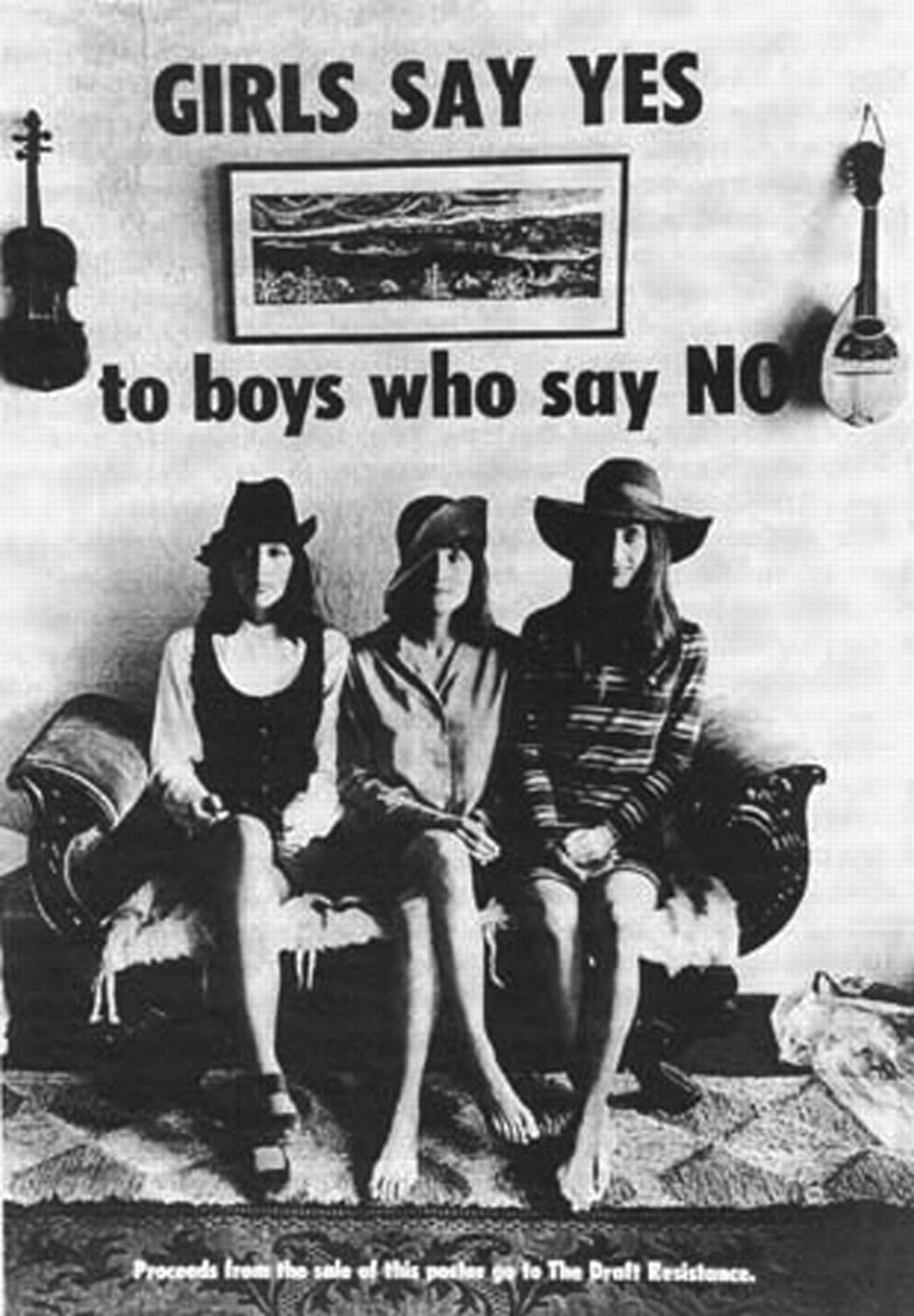9 minute read
Patriarchal War
By Graham Parsons
They are not what people expect. The young women who have left Western European countries to join ISIS as wives of its foot soldiers are typically bright, sociable, ambitious, connoisseurs of cosmopolitan culture from stable homes. These women certainly had other doors open to them but still chose, and in many cases took great risk to achieve, membership in ISIS as wives. The New York Times printed a photo of three teenage friends who ran away from home in East London to join ISIS and be married to their fighters as they pass through security at Heathrow airport. They look like normal girls who might shop at Urban Outfitters.
According to a report by the Institute for Strategic Dialogue, as of early 2015 at least 550 other young women have made similar journeys. When they arrive in the hands of ISIS they are typically housed in hostels for single women for a few weeks until they are given a choice of husbands and then married. They then serve the movement largely as supporters of the war, working as nurturing wives, mothers of future generations of ISIS members, and recruiters of other Westerners to ISIS. Indeed, the ability of ISIS to recruit such women is a key part of its strategy to attract young men as fighters. Its ability to offer wives to potential male recruits makes ISIS much more appealing.
“why would someone join ISIS as a wife? What could be the appeal of participating in a war in this specific gender role?”
It is natural to wonder, as New York Times reporter Susan Lehman does, “Why would…high-achieving girls trade their…lives for life in a war zone where women aren’t allowed to leave the house unaccompanied?”
Why anyone from the West joins ISIS is of course very complicated and unique to each individual. But there are many general factors at play here: The allure of reactionary Islamism to alienated Muslim immigrants in Western, increasingly Islamophobic societies; the need to assuage feelings of anger and humiliation about the treatment of Arab and Muslim people by Western states; the search for a purposive life among teenagers growing up in an empty popular culture. These are certainly salient features that help us understand why someone would join ISIS.
But I think Lehman is asking something more specific: why would someone join ISIS as a wife? What could be the appeal of participating in a war in this specific gender role?
Though the idea of women joining ISIS as wives may seem perplexing to us given the movement’s retrograde gender politics, I think that, on reflection, it shouldn’t be too difficult for us to understand the attraction of a traditional, feminine gender role in war to young women. This is because a similar gendered division of labor in war is common across cultures and certainly persists in our own (though we should be cautious about equating diverse experiences here.)
As Tom Digby puts it in his recent book, Love and War: How Militarism Shapes Sexuality and Romance, “Militaristic societies rely on a gender binary, in which manhood and womanhood are so sharply differentiated from each other that each is believed to have qualities opposite to those of the other.” The gender binary in question holds that good men are good warriors whereas good women are good nurturer/breeders.
The idea that manly and womanly qualities are ‘opposites’ often leads us to overemphasize the separation of these two roles, such that we often imagine women as utterly passive in war. In fact, as a matter of history, women have been highly active participants in war. However, though there have been many notable exceptions, women’s participation in war has been largely performed in the role of nurturers and breeders. This is crucial work for any community but has added significance in wartime. As nurturers in war, women nurse the wounded, comfort and encourage the warriors as spouses/mates, and organize support on the home front. Indeed, receiving this support from women is crucial in affirming the masculinity of those doing the fighting and, in turn, giving their fight meaning and raising their morale. Masculinity, including warrior masculinity, requires the affirmation of women as well as men.
Today we don’t only see this gender binary in the choices of the women joining ISIS. Women often embrace the role of nurturer under the control of men in times of conflict. To give one particularly overt example, shortly after September 11 Peggy Noonan hailed the return of warrior masculinity and subservient femininity in an op-ed published in The Wall Street Journal. Titled, “Manliness Is Next to Godliness,” the piece promotes manliness as the appropriate response to 9/11. She says, “I am speaking of masculine men, men who push things and pull things and haul things and build things, men who charge up the stairs in a hundred pounds of gear and tell everyone else where to go to be safe.” Men who, despite suffering, “suck it up and remain good-natured, constructive and helpful.” Noonan appears to see her job (indeed, all women’s job) post 9/11 to be to honor and celebrate such men. She describes traveling to Ground Zero to cheer and throw kisses at the manly men working at the site. She even laments that she once refused the assistance of a man who offered to help her lift her suitcase into the overhead compartment on an airplane. To refuse manly protection in this way, undermines manliness, and “manliness wins wars.” For Noonan, we need more John Waynes, and less Woody Allens. And, just as importantly, we need women who love John Waynes, not Woody Allens.
“Masculinity, including warrior masculinity, requires the affirmation of women as well as men.”
This sentiment wasn’t limited to Noonan. The New York Times reported a general resurgence of the appeal of manliness across the US after 9/11. They quote the editor of Esquire magazine, David Granger, who summarizes the point: “After a decade of prosperity that made us soft, metaphorically and physically, there’s a longing for manliness. People want to regain what we had in World War II. They want to believe in big, strapping American boys.” And as Susan Faludi observes in the same article, “There’s a great desire to feel protected, to feel Daddy is going to take care of us. The image of firefighters and rescuers is a healing and satisfying vision of masculinity.”
If we are surprised by the appeal of the warrior/nurturer gender binary to those joining ISIS, we show our failure to appreciate the societies around us. As we can see, the notion of participating in a fight in a subservient, feminine role is not so unfamiliar to Westerners. A special role for women in war is still reserved by the gender norms of our own cultures. Peggy Noonan and those like her felt a calling to participate in war. However, they did not see their primary task to be fighting on the frontlines. Rather, they saw their task as being to support and nurture men who do the actual fighting and to submit to them when they “tell everyone else where to go to be safe.” Even for us, war is still gendered labor.
Not even anti-war movements escape the gender binary. The anti-Vietnam War movement famously used Joan Baez and her sisters to assuage the threatened masculinity of young men considering avoiding the draft (see poster below). The movement understood that refusing military service required young men not to participate in the very activity that binary gender norms demand they participate in. To help these men refuse war while maintaining their masculinity, the movement chose to offer them (symbolically at least) the Baez sisters in the nurturer/breeder role. In this case, even the anti-war movement was gendered labor.
Seeing this feminine role in war and its persistence in our culture is important for many reasons beyond just helping us understand the women who join ISIS. Among other things, seeing the persistence of this role should highlight the gendered character of the role of warrior as well. If the feminine wartime role of nurturer/breeder is alive, so is its masculine counterpart.
Ethical theorists tend to discuss fighters in war in apparently gender-neutral language such as “combatants.” This may (or may not) be an appropriate idealization for the purposes of clear-eyed ethical analysis. Still, the fact is that the combatant is culturally gendered masculine. Being a combatant is treated by actual people as occupying a gender role with a host of traits. The warrior is understood as more than a mere “combatant.” First and foremost, he is a “he.” In addition, he is tough, aggressive, unemotional, self-sacrificing, obedient to authority, and has authority over others, especially women.
This is important because the ethical doctrines we create for mere “combatants” are going to come into conflict with the more substantial characteristics of the “warrior man” that we culturally attach to the combatant.
Among other things, this often explains the challenges we have restraining war, both the frequency of its occurrence and the methods used in it. Men who show sensitivity to the suffering of others and, in turn, restraint in the use of violence are chastised as unmanly. To illustrate, consider Donald Trump’s recent description of Ted Cruz as a “p***y” for having qualms about waterboarding. But there are innumerable other examples I could give. Anyone questioning the value of militaristic policies inevitably confronts the force of masculinity.
One of the central contributions of feminist philosophy has been to reveal the extent to which gender has shaped the commitments of supposedly gender-neutral theorists. Just war theorists would do well to keep this in mind. It is easy to see, once we start looking, that all the great figures in classical and early modern just war theory (Augustine, Aquinas, Grotius, Pufendorf, and Vattel, for instance) embrace the gender binary in question here. Gender did important work in their theories and cannot easily be excised. In as much as we are heirs to this tradition, we should not be surprised to learn, once we start looking, that this binary is still doing work in our own theories.
Disclaimer: Any views or opinions expressed on The Ethical War Blog are solely those of the post author(s) and not The Stockholm Centre for the Ethics of War and Peace, Stockholm University, the Wallenberg Foundation, or the staff of those organisations.




I would caution you to use Woody Allen as an example that is the opposite of patriarchal “manliness.” Woody spent a career creating the neurotic insecure obsessive female trope in his films–and then successfully used that stereotype he seeded in the zeitgeist to gaslight the mother, babysitter, siblings, custody judge and victim herself who blew the whistle on his pedophilia. Men of intellect have been using their genius to maintain a gender binary paradigm in which women’s voices are distorted and/or ignored for centuries. It’s a different kind of power. Just as gendered. They provide the ideas that maintain gendered power differentials, instead of the brawn. Probably the more dangerous of the two.